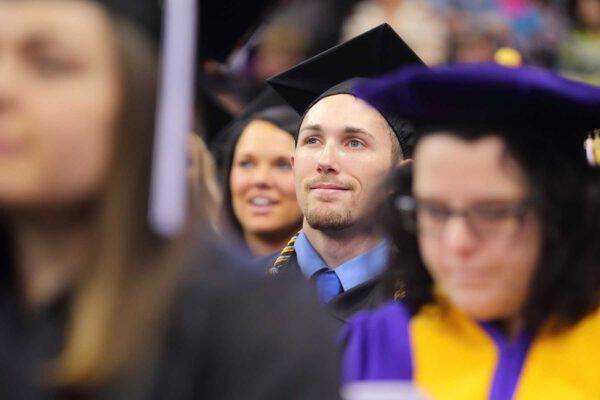By Margery B. Ginsberg
What would it take to achieve high levels of postsecondary student learning across all cultural groups and different levels of academic preparation? In particular, how can educators teach in ways that redress persistent disparities in learning and college completion among historically underserved and underrepresented learners?
Over 20 years ago, my co-researcher, Raymond Wlodkowski, and I decided to test the role of motivation in overcoming these odds. We scoured multidisciplinary research to synthesize information on motivation into a pragmatic tool for instructional planning. The goal was to help faculty move beyond intuition and reliance on a few best practices to a theoretically coherent set of motivational conditions and practices that would reach a broader range of students.
A Multidisciplinary Motivational Framework
Then as now, published research shows that when students are motivated to learn in order to receive a reward or avoid a negative sanction (extrinsic motivation), they will take a cursory approach to accomplish their goals. Deep and enduring lifelong learning requires a different approach to motivation. Instructional plans also need to be intrinsic motivational plans that inspire students to learn for the deep satisfaction it brings. Our research led to the Motivational Framework for Culturally Responsive Teaching, which has been the genesis of a number of works since.
The Motivational Framework for Culturally Responsive Teaching
The major purpose of this framework is to unify teaching practices for motivational coherence so that faculty can more consistently plan for sustained learning among a broad range of students. Motivation is important not only because it apparently improves learning, but also because it initiates, mediates, and is a consequence of learning. Instructors have long known that when learners are motivated during class, communication flows, anxiety decreases, and creativity increases. Instruction with motivated learners is joyful and exciting for all concerned. Further, learners who complete a learning experience feeling positively motivated about what they have learned are more likely to have a continued interest in their learning.
The motivational framework systematically represents four conditions that act both individually and in concert to enhance students’ intrinsic motivation to learn. Each condition has two criteria. (Click to enlarge.)
Although there are a host of activities that align with the framework and can be adapted across disciplines, motivation is more than a checklist of best practices. One of the most effective ways for instructors to use the framework is for course and lesson design. (Click to enlarge.)
Certainly, many (if not most) instructors try to make their teaching motivationally appealing, but they often rely on intuition and decisions made while teaching. Difficulties arise when learner motivation seems to be low or diminishing. Without an instructional architecture to help make improvisation effective, instructors may feel hopeless and may be prone to blaming learners. A plan can remind us of what to do and when to do it, and show us where we might possibly flex and adjust along the way in ways that are respectful, focused on learning, and hopeful.
Cultural Diversity and Motivation
Teaching to elicit intrinsic motivation to learn is easier said than done. Motivation is the purposeful human energy we direct toward a goal, and every moment of our lives is a competition among our senses to perceive what matters most. Colleges and universities have more students than ever before whose perceptions and ways of making sense of interactions and information vary from one another and from their instructors. Influenced by unprecedented patterns of migration and immigration, skillful postsecondary teaching is a highly nuanced endeavor.
Who we are culturally and how we interact with others is an intriguing intersection of language, values, beliefs, behaviors, and experiences that pervades every aspect of our life, continually changing and evolving. Learners are individuals with complex identities, personal histories, and unique living contexts. For example, a person is not just older or African American or female; she is older, African American, and female. This example is still too simple because it does not include her religious or spiritual beliefs, sexual orientation, and income or professional status, among other influences. Each of us has a variety of identities through which we make sense of things. There is no one way for an instructor to understand another person’s cultural identity. The foremost challenge—and opportunity—of education is to create equitable and successful learning environments for a full range of learners.
Realistically accomplishing this goal means respecting the cultural integrity of every learner while teaching in ways that enhance their motivation and learning. This is why the Motivational Framework for Culturally Responsive Teaching builds on principles that are meaningful across cultural groups and educational backgrounds. Rather than using a microcultural perspective—one that, for example, identifies a specific student group and prescribes particular approaches to teaching according to assumed characteristics of the entire group—the motivational framework emerges from research and literature on creating a pluralistic structure for teaching that elicits intrinsic motivation among all groups of people. This in no way mitigates the importance of knowing students as well as possible.
Yet, there are some characteristics that all human beings share. Fundamentally, all students are motivated to learn—though some may not be motivated to learn what an instructor has planned. Essentially, students own their motivation and when instructors speak of motivating students, whether we intend to or not, we are putting students in a one-down position that overlooks innate strengths while creating a sense of dependency. When students seem unmotivated, it may be that their motivation is directed toward something else, aligned with a different perspective, or part of another set of values. But in any circumstance, learners are not inert. As educators, we elicit student motivation and help students direct their energy, attention, and interest to learning. This doesn’t happen by default, and instructional plans should also be motivational plans.
**********************
Looking critically at this motivational framework for culturally responsive teaching, any such plan risks an inherent dilemma: it makes research pragmatic for everyday consideration, yet research becomes more reductive. Nonetheless, in the past, higher education has attempted to eliminate disparity in learning while tinkering around the edges of the most influential influence on student success—how we teach. Given higher education’s increased numbers of novice, contingent, and part-time faculty, and the call for instructional excellence to achieve inclusion and strengthen diversity across U.S. campuses, the time has come to put the relationship between motivation and learning into an action-oriented, deliberate process.
If you have any questions or comments about this blog post, please contact us.




